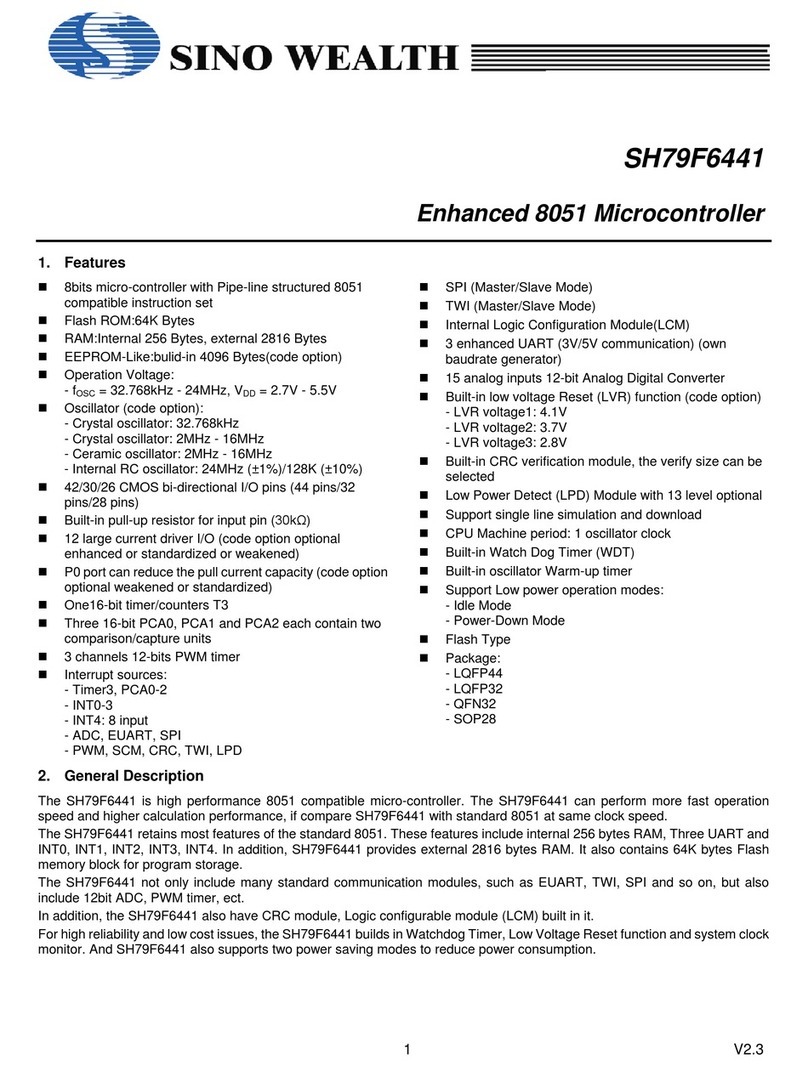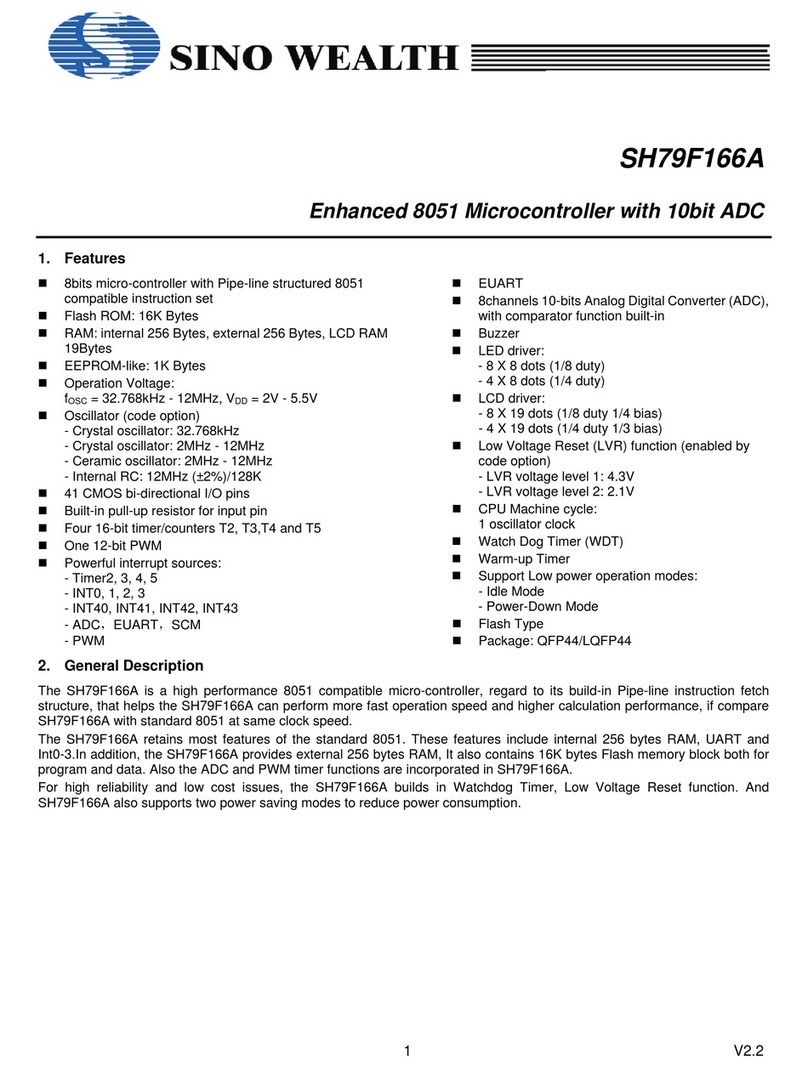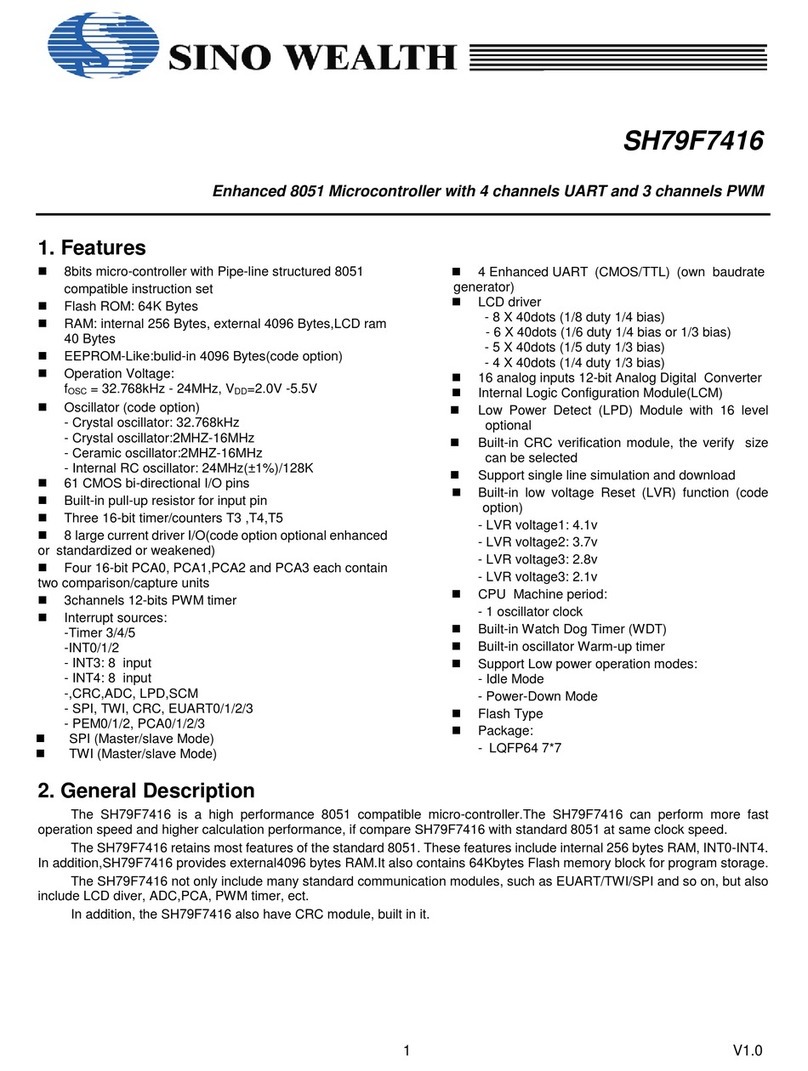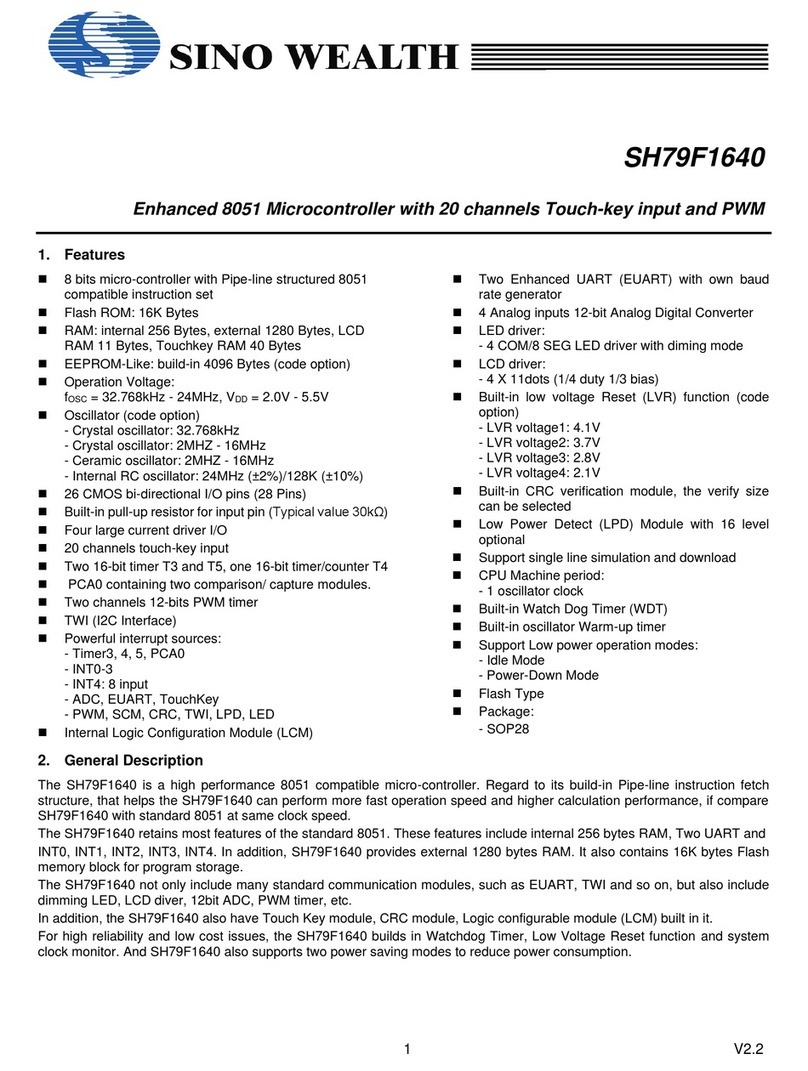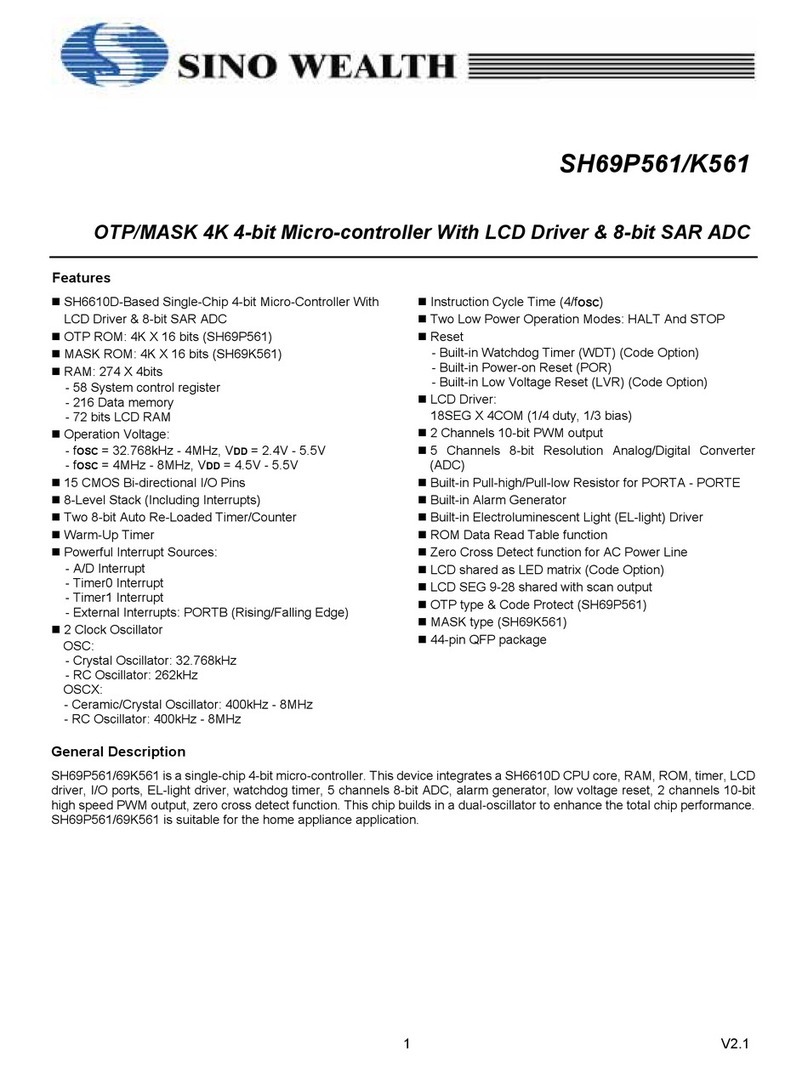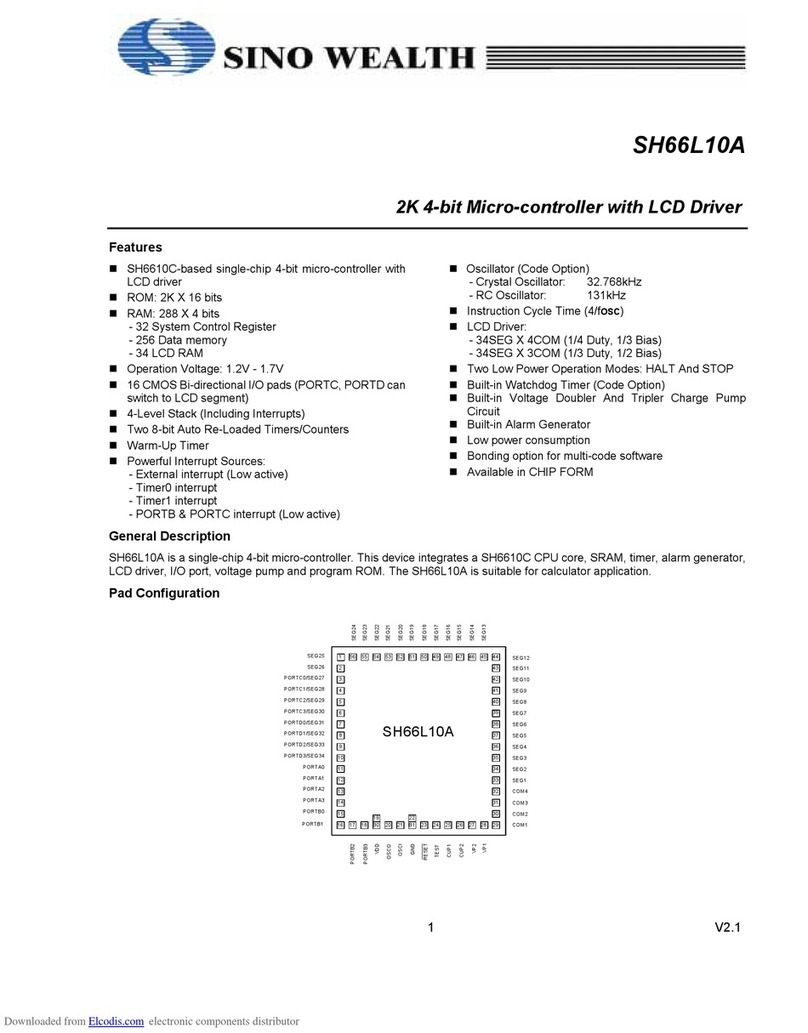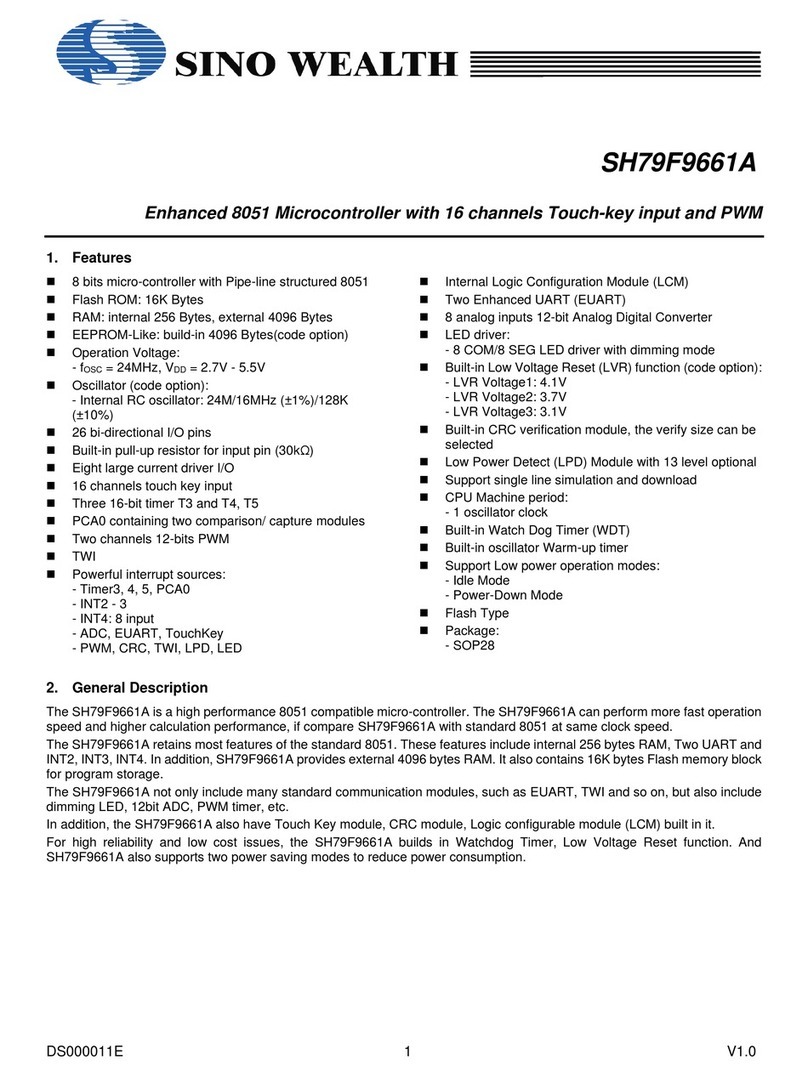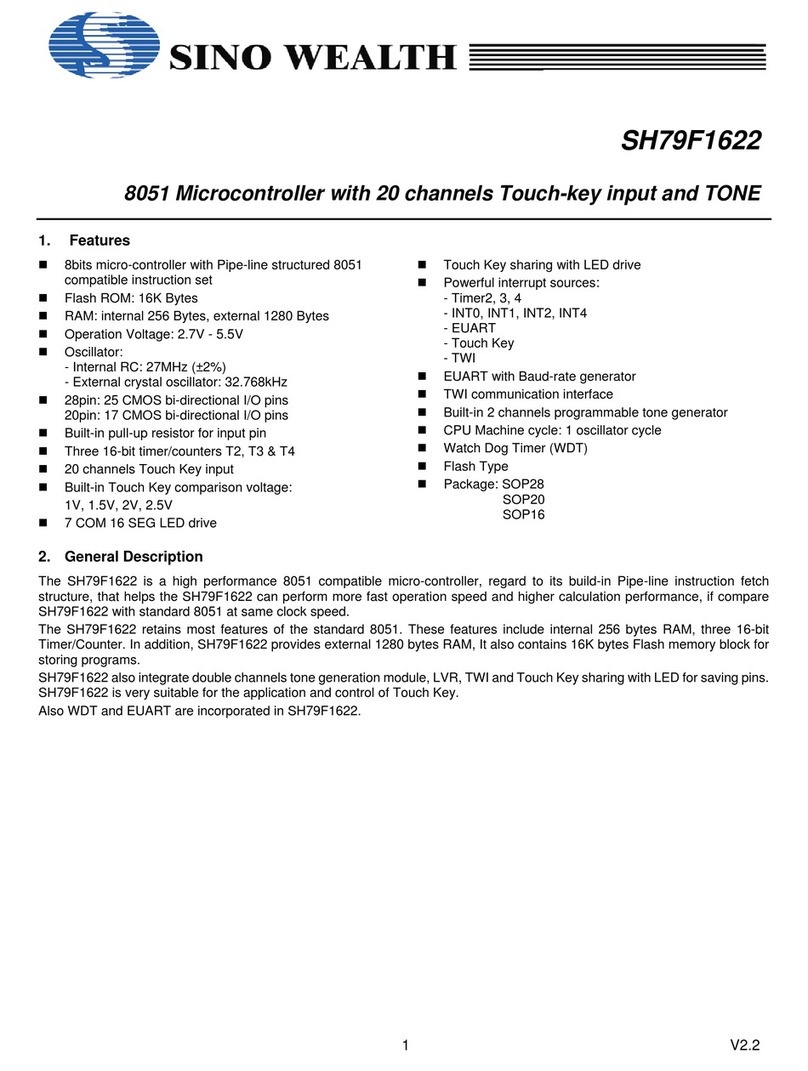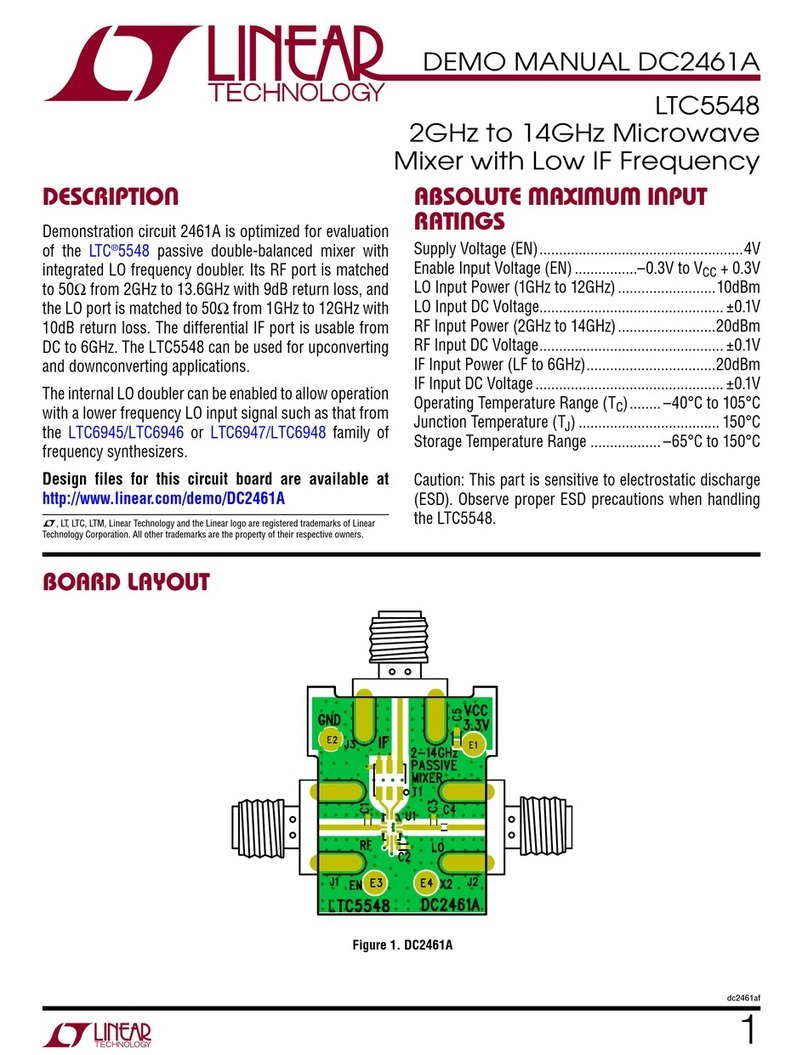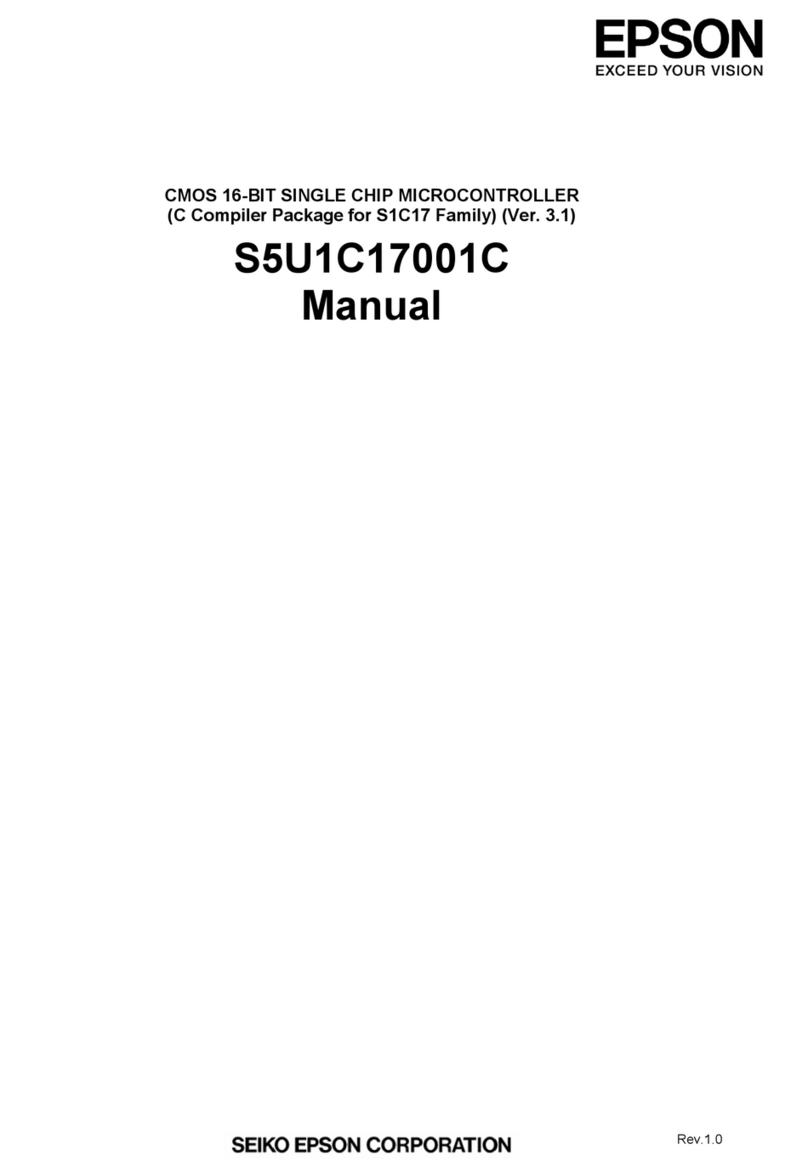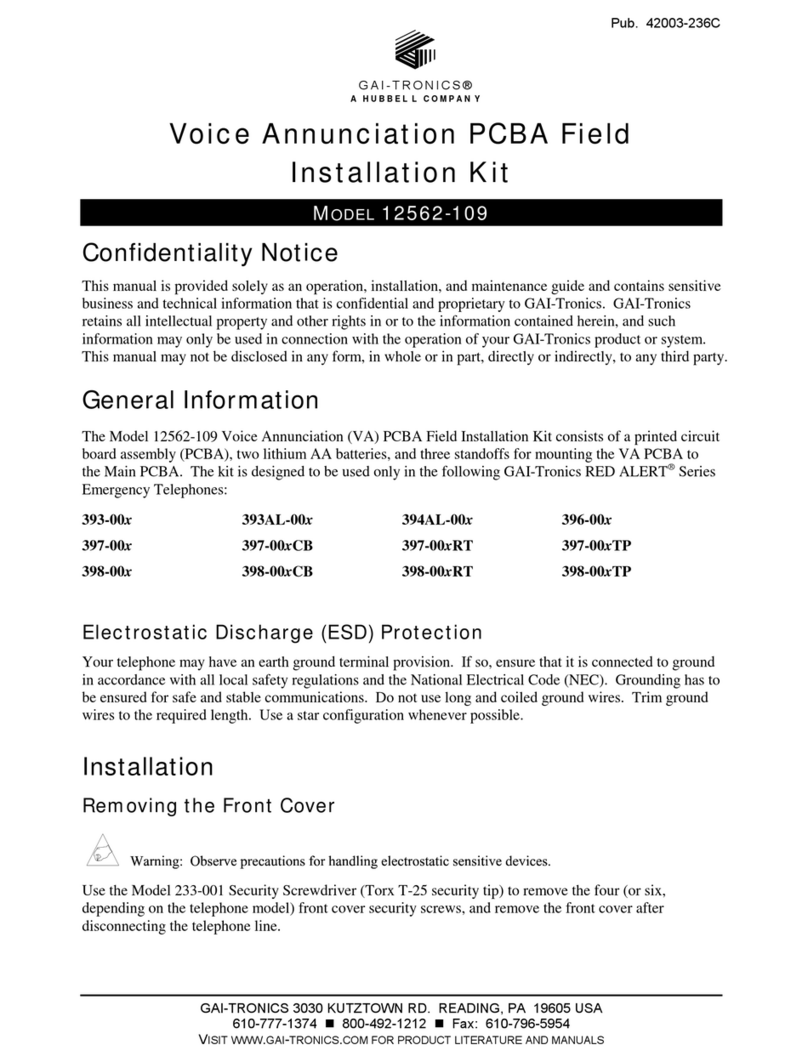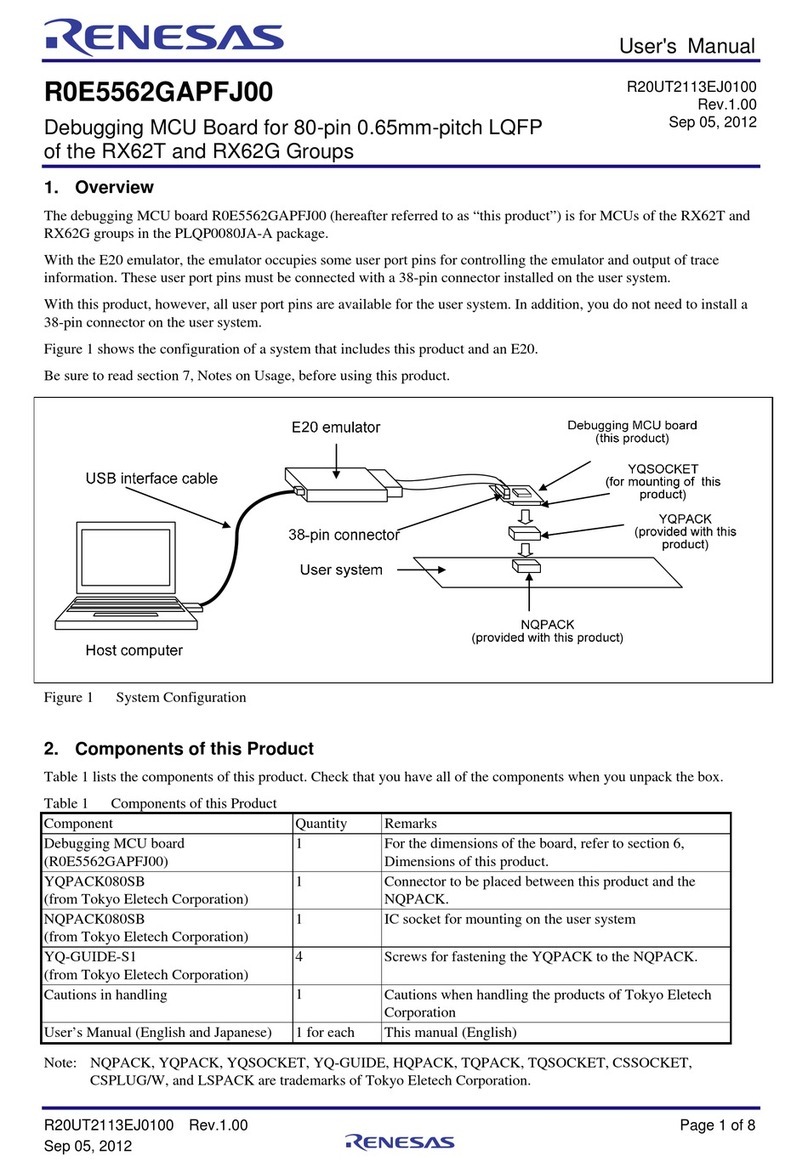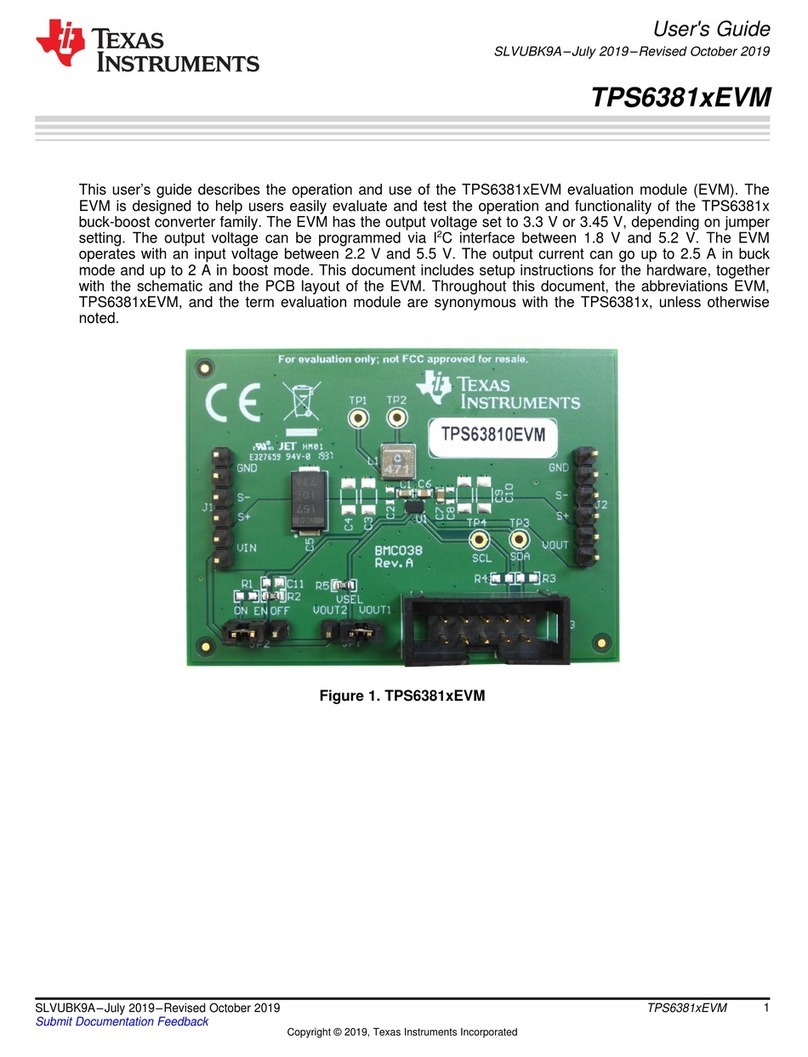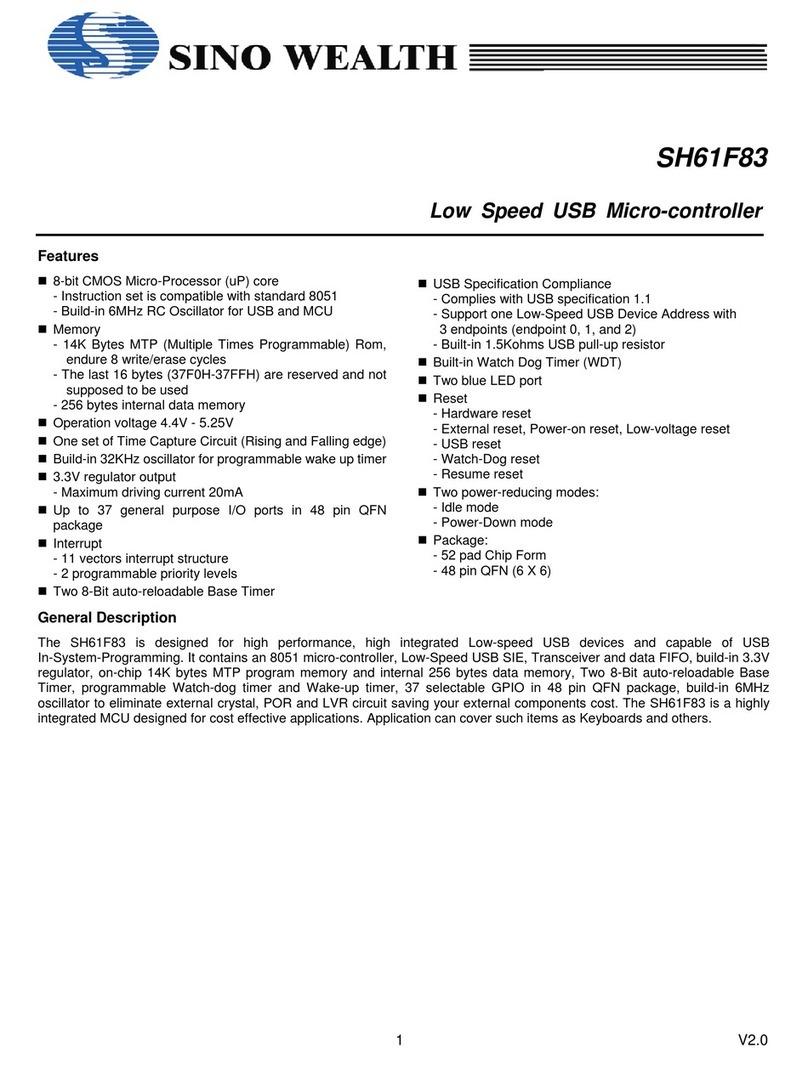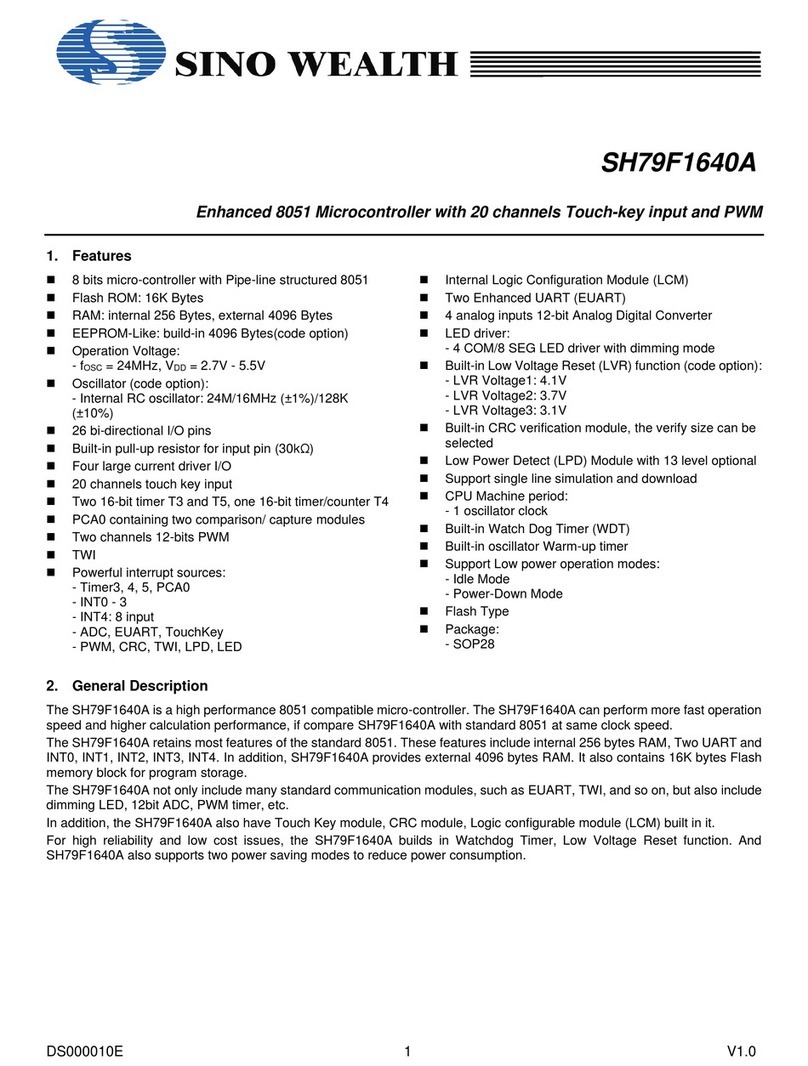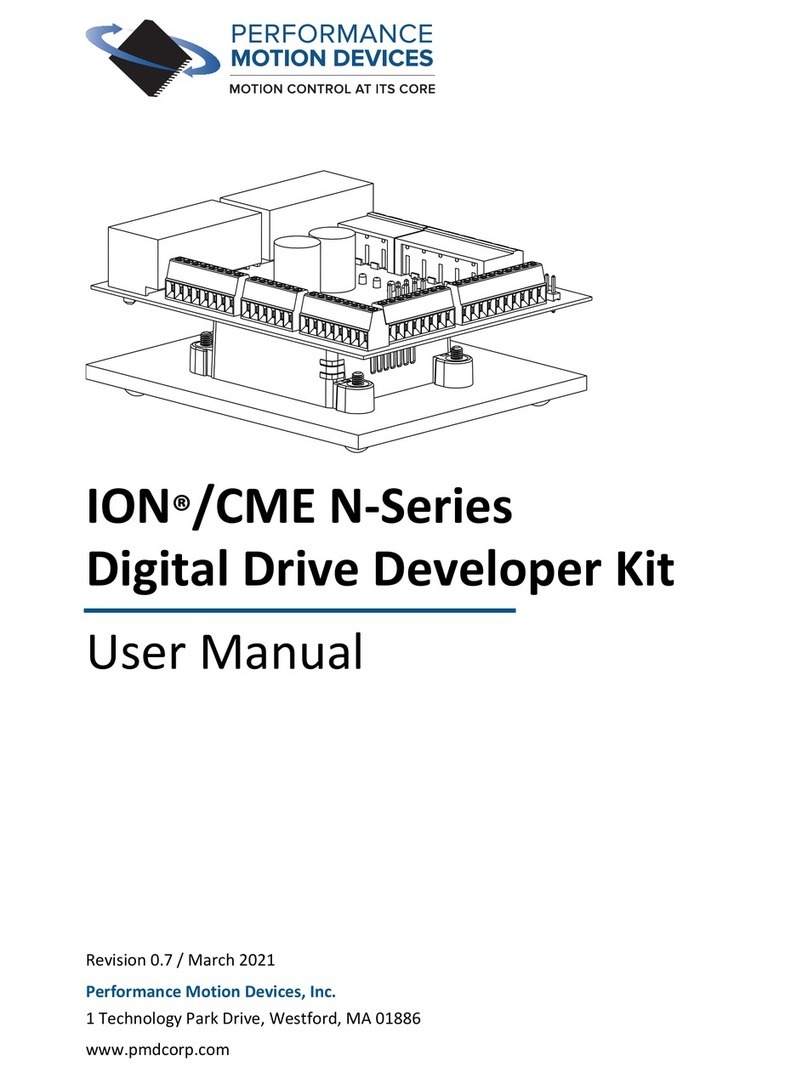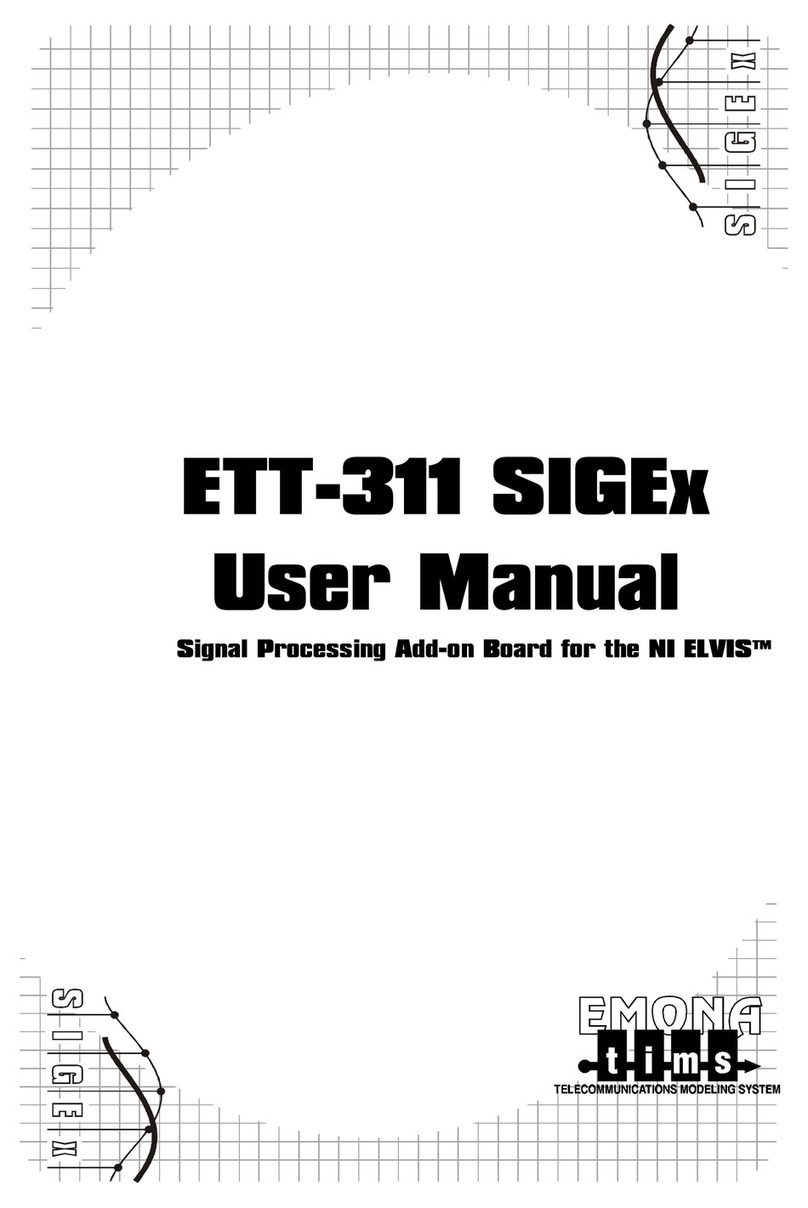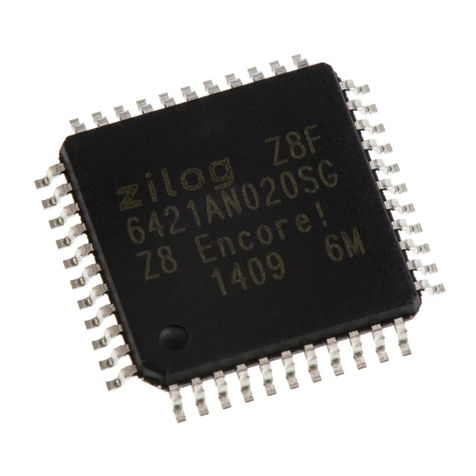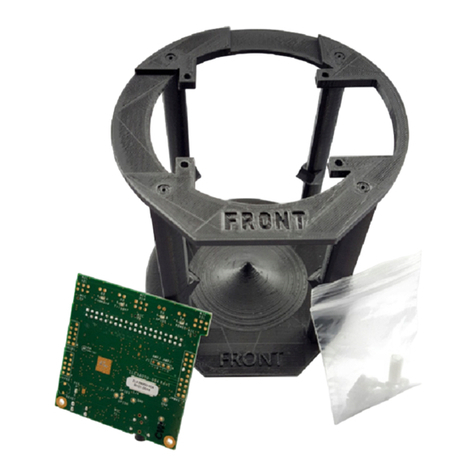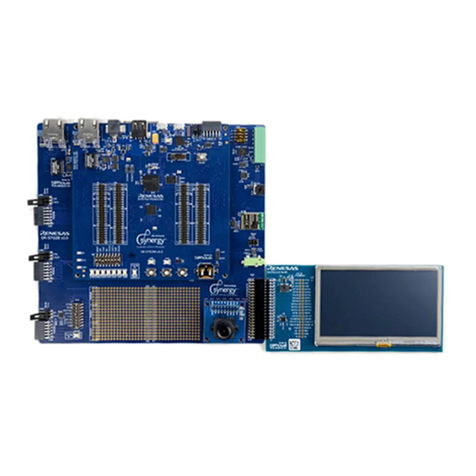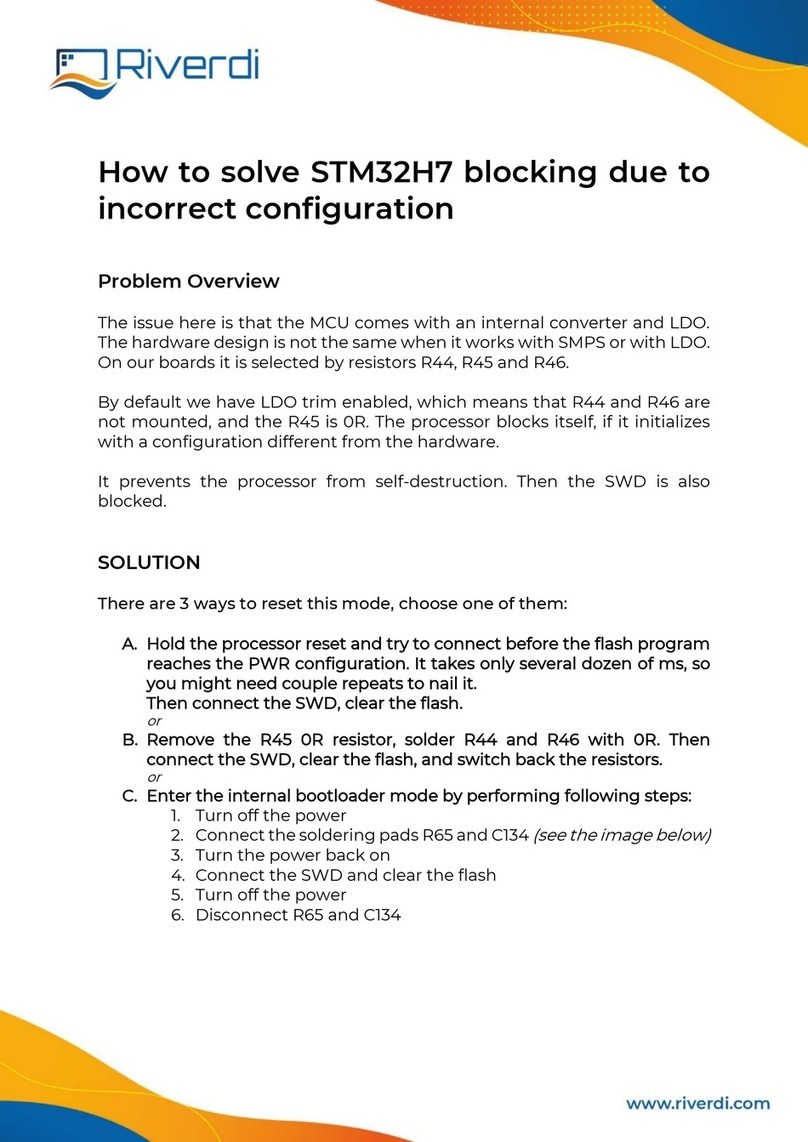
SH69P55A/K55A
7
Functional Descriptions
1. CPU
The CPU contains the following functional blocks: Program
Counter (PC), Arithmetic Logic Unit (ALU), Carry Flag (CY),
Accumulator, Table Branch Register, Data Pointer (INX,
DPH, DPM, and DPL) and Stacks.
1.1. PC
The PC is used for ROM addressing consisting of 12-bit:
Page Register (PC11), and Ripple Carry Counter (PC10,
PC9, PC8, PC7, PC6, PC5, PC4, PC3, PC2, PC1, PC0).
The program counter is loaded with data corresponding to
each instruction. The unconditional jump instruction (JMP)
can be set at 1-bit page register for higher than 2K.
The program counter can address only 4K program ROM
address. (Refer to the ROM description).
1.2. ALU and CY
The ALU performs arithmetic and logic operations. The ALU
provides the following functions:
Binary addition/subtraction (ADC, ADCM, ADD, ADDM,
SBC, SBCM, SUB, SUBM, ADI, ADIM, SBI, SBIM)
Decimal adjustments for addition/subtraction (DAA, DAS)
Logic operations (AND, ANDM, EOR, EORM, OR, ORM,
ANDIM, EORIM, ORIM)
Decisions (BA0, BA1, BA2, BA3, BAZ, BNZ, BC, BNC)
Logic Shift (SHR)
The Carry Flag (CY) holds the ALU overflow that the
arithmetic operation generates. During an interrupt service
or call instruction, the carry flag is pushed into the stack and
recovered from the stack by the RTNI instruction. It is
unaffected by the RTNW instruction.
1.3. Accumulator (AC)
The accumulator is a 4-bit register holding the results of the
arithmetic logic unit. In conjunction with the ALU, data is
transferred between the accumulator and system register,
or data memory can be performed.
1.4. Table Branch Register (TBR)
Table Data can be stored in program memory and can be
referenced by using Table Branch (TJMP) and Return
Constant (RTNW) instructions. The TBR and AC are placed
by an offset address in program ROM. TJMP instruction
branch into address ((PC11 - PC8) X (28) + (TBR, AC)). The
address is determined by RTNW to return look-up value
into (TBR, AC). ROM code bit7-bit4 is placed into TBR and
bit3-bit0 into AC.
1.5. Data Pointer
The Data Pointer can indirectly address data memory.
Pointer address is located in register DPH (3-bits), DPM
(3-bits) and DPL (4-bits). The addressing range is
000H--3FFH. Pseudo index address (INX) is used to read
or write Data memory, then RAM address bit9 - bit0 which
comes from DPH, DPM and DPL.
1.6. Stack
The stack is a group of registers used to save the contents
of CY & PC (11-0) sequentially with each subroutine call or
interrupt. The MSB is saved for CY and it is organized into
13 bits X 8 levels. The stack is operated on a first-in,
last-out basis and returned sequentially to the PC by the
return instructions (RTNI/RTNW).
Note:
The stack nesting includes both subroutine calls and
interrupts requests. The maximum allowed for subroutine
calls and interrupts are 8 levels. If the number of calls and
interrupt requests exceeds 8, then the bottom of stack will
be shifted out, that program execution may enter an
abnormal state.
2. RAM
Built-in RAM contains general-purpose data memory and system register. Because of its static nature, the RAM can keep
data after the CPU entering STOP or HALT.
2.1. RAM Addressing
Data memory and system register can be accessed in one instruction by direct addressing. The following is the memory
allocation map:
System register: $000 - $02F, $380 - $3AF, $3C0 - $3C2
Data memory: $030 - $1A7
LCD RAM space: $300 - $313, $320 - $333
RAM Bank Table:
Bank 0
B = 0 Bank 1
B = 1 Bank 2
B = 2 Bank 3
B = 3 Bank 4
B = 4 Bank 5
B = 5 Bank 6
B = 6 Bank 7
B = 7
$000 - $07F $080 - $0FF $100 - $17F $180 - $1FF $200 - $27F $280 - $2FF $300 - $37F $380 - $3AF,
$3C0 - $3C2
Where, B: RAM bank bit use in instructions




















